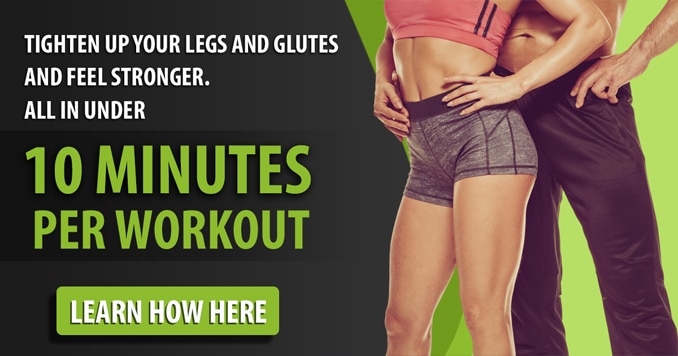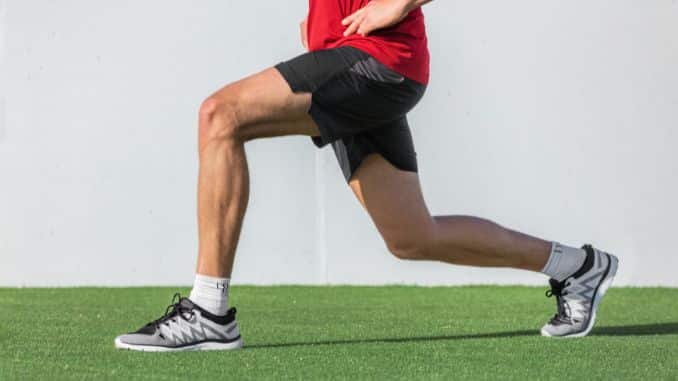
Disclosure: This post shares general info about health and fitness and isn’t meant to replace professional advice. Before starting any new workout, especially if you have injuries or health conditions, check with a healthcare provider or certified Pilates instructor. These exercises are based on my own experience and advice from trusted trainers. Always pay attention to your body; if something hurts, stop and get advice. Everyone’s results will be different, and steady progress, a good diet, and rest are all part of the process.
Stay safe and enjoy getting stronger!
Have you ever felt like your legs just don’t have the energy to keep up with your busy day? I’ve been there too. After sitting at a desk for hours or trying to power through a workout, my legs used to feel weak and worn out. That all started to change when I gave Pilates leg workout a try.
What I love about Pilates is that it’s not just about core strength or flexibility—it’s a fantastic way to build strong, toned legs without putting too much strain on your body. The Pilates leg workout can significantly improve your lower body strength.
And the best part? It’s easy for almost anyone to jump right in and start feeling the benefits.
So, if you’re looking for some effective, beginner-friendly Pilates moves to strengthen your legs, you’re in the right place.
Let’s dive into a few exercises that have made a big difference for me and countless others who were in the same boat.
1. Bridge
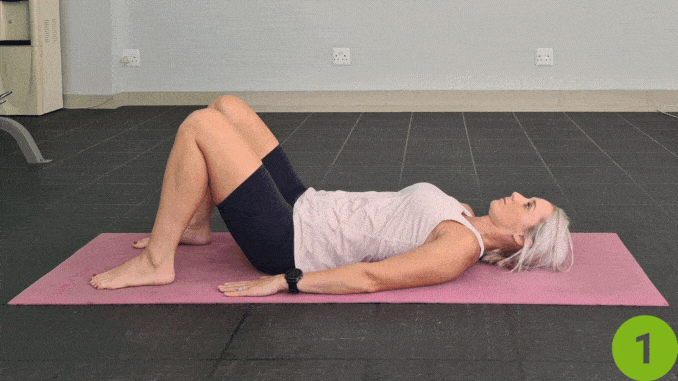
Bridge
- Lie on your back with your knees bent and your feet flat on the floor.
- Maintain good alignment with your head, shoulders, and hips, relaxing your upper body. Bring your arms at your sides.
- Contract your abdominal area, then push from your heels to lift your hips.
- Hold this position for several deep belly breaths, in through your nose and then out through your mouth.
- Relax and return to the starting position. Perform the movement for 12 repetitions.
In her article Road to Recovery: Training After an Injury‘, Ewa Januszkiewicz powerlifter, wrote about her journey of bouncing back from some pretty tough injuries.
She shared, “After tearing my ACLs, lunges and glute bridges became essential to my recovery. I relied on lunges to rebuild strength and stability in my legs.”
“I started with bodyweight lunges and gradually added weight, which helped me regain balance and confidence without overloading my knees. For my back injury, glute bridges made a huge difference,” she continued.
“They strengthened my hips and lower back, supporting my spine and easing the pain. As I progressed, I moved on to more advanced variations like marching bridges to improve my core stability,” Januszkiewicz added.
Tip: For a challenge, try lifting one leg while holding the bridge position. It really works those glutes!
2. Single Leg Bridge
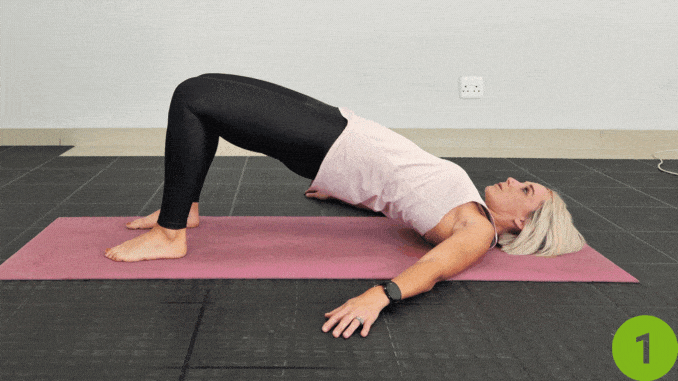
Single Leg Bridge
- Lie on your back with your knees bent and your feet flat on the floor.
- Maintain good alignment with your head, shoulders, and hips, relaxing your upper body. Extend your arms at your sides.
- Contract your abdominal area, then push from your heels to lift your hips.
- Lift one leg to kick your foot up, holding this position for a couple of seconds.
- Then lower your foot back down and then repeat the movement on the opposite leg.
- Perform the movement for 12 repetitions on each side.
3. Bridge with Heel Raise
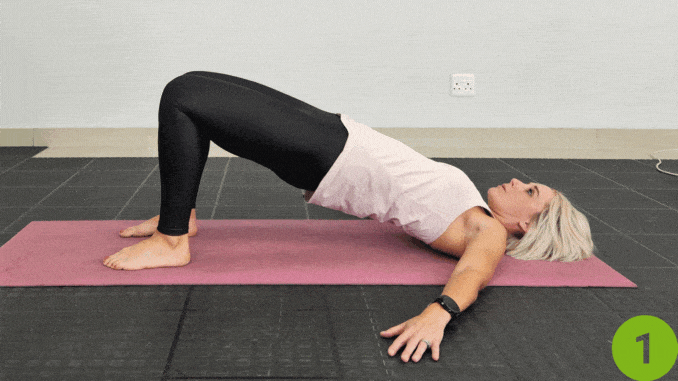
Bridge with Heel Raise
- Lie on your back with your knees bent and your feet flat on the floor.
- Maintain good alignment with your head, shoulders, and hips, relaxing your upper body. Extend your arms out to the sides.
- Contract your abdominal area, then push from your heels to lift your hips.
- Then slowly lift both heels off the floor, holding the position for a couple of seconds.
- Lower both heels down to return to the starting position and repeat the movement for 12 repetitions.
Bret Contreras, popularly called “The Glute Guy,” is a famous strength coach and fitness expert who focuses on glute training.
Contreras believes that the best glute exercise depends on your body type, fitness level, and what you can comfortably do. However, he often recommends bridges as a go-to exercise for building strong glutes and legs. They’re straightforward, effective, and suitable for almost everyone.
Counterstretch: Knees to Chest
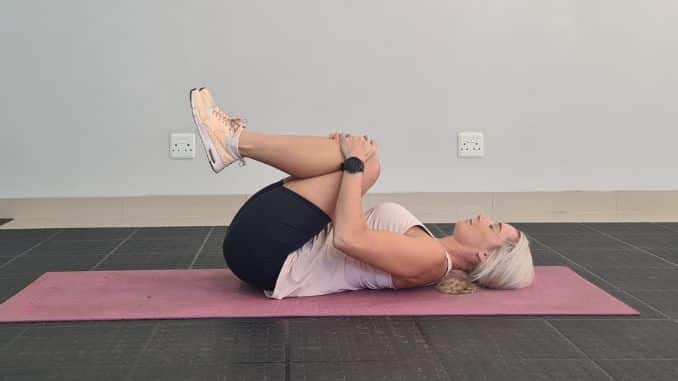
Knees to Chest
- Lie on your back on the floor with your knees bent and your feet flat on the floor, maintaining good alignment with your head, shoulders, and hips.
- Bring both knees to your chest and hold onto your knees with both arms, looking for a light stretch in the lower back and glutes.
- Hold the position for several belly breaths, in through your nose and then out through your mouth.
In addition, to intensify the movement for this pilates exercises for legs, you can rock your knees from side to side.
4. Hamstring Stretch
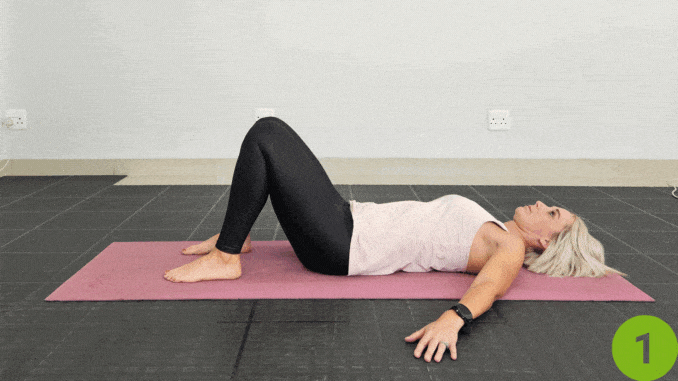
Hamstring Stretch
- Lie on your back with your knees bent and your feet flat on the floor, maintaining good alignment with your head, shoulders, and hips. Engage your core.
- Raise your one leg towards the ceiling with your toes pointing toward you.
- To intensify the stretch, wrap your hands around your shin, pulling your leg gently towards you.
- Keep your opposite leg bent or straight, depending on your comfort level.
- Hold the position for several deep belly breaths, in through your nose and then out through your mouth. Lower your leg to return to the starting position. Repeat the movement on the opposite side.
5. Lunge
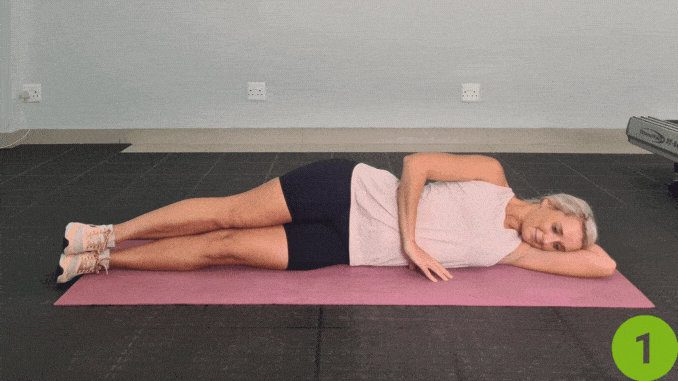
Lunge
- In this pilates exercises for legs, firstly, begin in an upright standing position, maintaining good alignment with your head, shoulders, hips, and legs. Engage your core.
- Take a big step back with one foot, keeping your toes pointing straight ahead.
- Secondly, bend your front knee directly over your ankle, creating a 90-degree angle from the body, and straighten your back leg.
- Maintain good alignment with your head, shoulders, hips, and back leg. Lastly, step your foot forward to return to the starting position and repeat the movement.
- After several repetitions, perform the movement on the opposite leg. Complete 12 repetitions.
Kate Sutton, a renowned personal trainer and instructor at Sweat By BXR and Kobox, emphasizes the power of lunges for a strong lower body, noting that, “Lunges are highly effective for building muscle in the lower body. They primarily target the quadriceps, glutes, hamstrings, and calves, but also engage stabilizing muscles in the core and hips.”
Tip: If you’re unsure about your form, use a mirror or take a video to check. Or, try our quick Posture and Stability Quiz for personalized tips on your lunge form!
Counterstretch: Halfway Lift
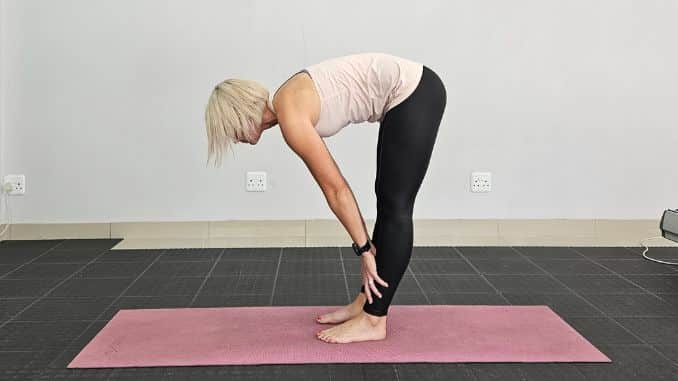
Halfway Lift
- In this pilates exercises for legs, firstly, begin in an upright standing position with your feet hip-width apart, maintaining good alignment with your head, shoulders, hips, and legs. Engage your core.
- Secondly, bend your upper body as you place your hands just below your knees, keeping your legs straight and your spine parallel to the floor.
- Lastly, hold the position for several deep belly breaths, in through your nose and then out through your mouth.
- Raise back up to return to the starting position. Repeat the movement for 2 repetitions.
Furthermore, depending on your range of motion, lower your hands toward the floor or on your shin for a deeper stretch while alternately bending each knee, similar to a marching motion.
6. Sumo Squat or Plié Squats
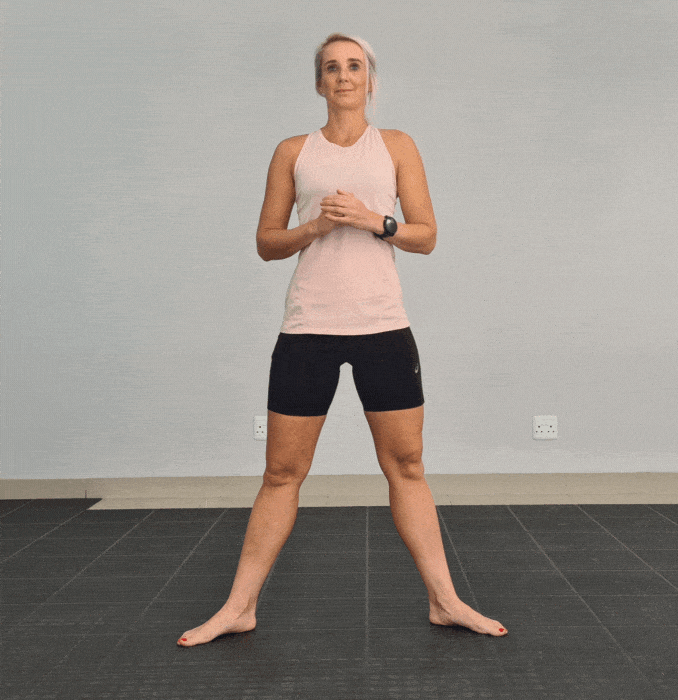
Sumo Squat or Plié Squats
- Begin in an upright standing position with your feet considerably wider than shoulder-width apart and your toes pointed slightly outward.
- Maintain good alignment with your head, shoulders, and hips.
- Clasp your hands in front of your body and tighten your abdominal muscles.
- Bend your knees and hinge through your hips to lower your seat into a deep squat position, keeping your knees behind your toes.
- Raise back up to return to the starting position, squeezing your glutes at the top position. And then repeat the movement for 12 repetitions.
Julie Lohre, a trailblazer in the fitness world, is known for her high-energy gymnastic routines and innovative approach. One of her go-to moves? The plié squat.
Julie says, “Plie squats are a great exercise that target your quads, inner thighs, and hamstrings. They help build lower body strength and stability, with the option to add weight or use a Smith machine for extra support.”
7. Single Leg Hip Circles
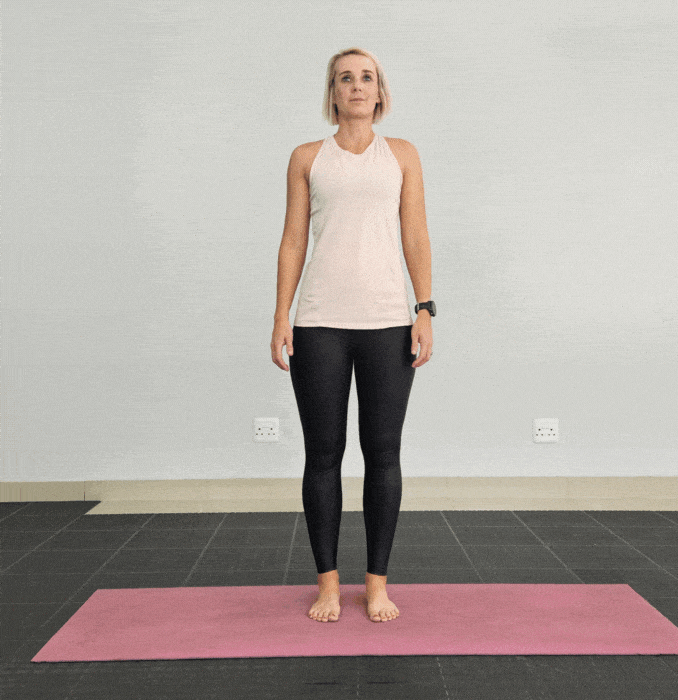
Single Leg Hip Circles
- Begin in an upright standing position with your feet hip-width apart, maintaining good alignment with your head, shoulders, hips, and legs.
- Engage your core and raise one knee, ideally to a 90-degree angle.
- Rotate your knee out to the side, then back to the center.
- Keep your head, shoulders, and also your hips in good alignment.
- Repeat the movement for 5 repetitions on each side.
The Role of Leg Muscles in Core Strength
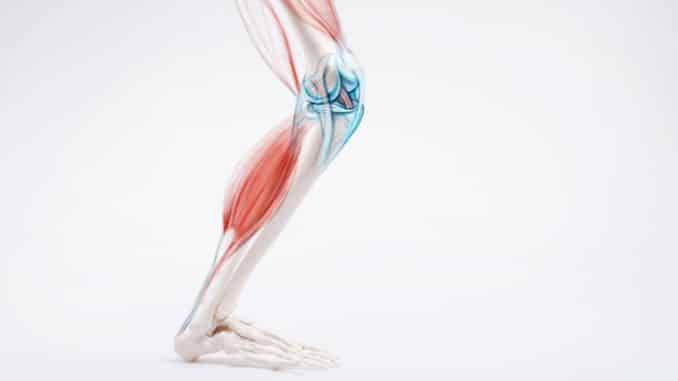
Leg muscles play a crucial role [2] in core strength and stability.
While the core is often associated with the abdominal muscles, it extends beyond just the front of the body. The core includes the muscles in the lower back, hips, and pelvis.
Leg muscles, particularly the glutes and hamstrings, are interconnected with the core muscles. When these leg muscles are strong and engaged, they provide a solid foundation for the core to work effectively.
In essence, leg muscles act as an anchor, allowing the core to function optimally and support the body’s overall strength and functionality. Here’s how different leg muscles contribute to core strength:
1. Glutes
The gluteal muscles in the buttocks, including the gluteus maximus, medius, and minimus, are located in the buttocks and are closely connected to the core muscles. They help stabilize the pelvis and support the spine’s alignment. Strong glutes aid in maintaining proper posture and balance.
2. Hamstrings
The hamstrings are located on the back of the thigh and involve hip extension and knee flexion. They play a role in stabilizing the pelvis and lower back during movements and help prevent excessive lumbar (lower back) arching, which can strain the core.
3. Hip Flexors
The hip flexor muscles, including the iliopsoas, are responsible for lifting the legs and maintaining stability in the pelvis. Tight or imbalanced hip flexors can also affect core stability and posture.
4. Adductor Muscles
The adductor muscles in the inner thighs play a crucial role in movements such as bringing your legs together, crossing your legs, and squeezing your thighs. Proper strength and flexibility in the adductor muscles are also essential for various daily activities and sports.
4. Quadriceps
The quadriceps muscles are wrapped around the front and outer thighs, assisting in knee extension. While not direct core muscles, they help support leg movements that impact the core’s stability and balance.
5. Calf Muscles
The calf muscles (gastrocnemius and soleus) are involved in ankle movements and can indirectly affect posture and core stability, especially during activities that require balance. The Pilates leg workout targets key muscle groups, enhancing both leg strength and core stability, which improves overall body strength and functionality.
What is Pilates Leg Workout?

A Pilates leg workout is a targeted exercise routine designed to strengthen and tone the major muscle groups of the legs while enhancing overall flexibility and balance. These workouts typically involve low-impact, controlled movements that engage various leg muscle groups, including the quadriceps, hamstrings, glutes, and also calf muscles.
Certainly, pilates exercises [1] for legs offer a range of benefits for strength and flexibility in the lower body. Here are some of the advantages:
- Leg Strength: Pilates leg exercises target the major leg muscle groups, encompassing the quadriceps, hamstrings, calf muscles, and also gluteal muscles. This helps build strength and endurance in the lower body and supports the upper body’s weight.
- Toned and Lean Muscles: Pilates focuses on elongating and toning muscles, which can lead to more sculpted and lean legs.
- Improved Flexibility: Many Pilates leg exercises incorporate stretching movements that enhance the range of motion in the hips, knees, and ankles, promoting greater flexibility.
- Better Posture: Pilates emphasizes core engagement, crucial for maintaining good posture. Strong leg muscles contribute to overall stability and support for the spine.
- Enhanced Balance and Coordination: Pilates exercises often involve balancing on one leg or executing movements that require coordination. This helps improve balance and overall body control.
- Core Engagement: Many leg exercises in Pilates require tightening the abdominal wall or core engagement, promoting an integrated approach to fitness that benefits the entire body.
Other Pilates Moves for Stronger Legs

1. Single Leg Circles
- Lie on your back and extend your legs straight on the floor, maintaining good alignment in your head, shoulder, hips, and legs. Place your hands on the sides.
- Lift your left leg straight off the mat while extending the bottom leg on the floor.
- Tighten the core and start drawing small circles with your lifted leg.
- And then start by moving your leg across your body towards the opposite shoulder.
- Start with 1 set with 10 repetitions on each leg.
2. Side Leg Lift
- Begin by lying on your left side on the floor and stack your right leg on top of the other.
- Extend the left arm perpendicular to the body and rest the head on it.
- Maintain a good alignment in your head, shoulders, hips, and legs.
- The other arm can be placed on the hip or the mat in front for balance.
- Tighten the core and lift the top leg to the hip level while keeping a straight leg.
- Lower your leg down and return to the original position.
- Start with one set with 10 repetitions on each leg.
3. Standing Leg Lifts
- Firstly, start in an upright standing position with your feet hip-width apart.
- Maintaining good alignment in your head, shoulders, and head. Engage your core for stability.
- Keeping your legs straight, slowly lift one leg straight to the side, leading the movement from your hip.
- Secondly, lift it to a comfortable height, typically parallel to the ground or slightly lower.
- Avoid leaning your upper body or tilting your hips.
- Lastly, hold a moment at the movement’s top to engage the outer thigh muscles.
- Then, lower the leg back down with control and switch legs.
Leg Strength Quiz – Discover How Strong Your Legs Are!

This quiz will help you figure out how strong your legs are right now and which areas you might want to work on with Pilates leg workout. Just pick the answer that best fits your current ability. Remember, this quiz is for general information and is not meant to replace advice from a professional.
1. Single Leg Balance Check
Can you stand on one leg for 20 seconds without wobbling or losing balance?
A. Yes, easily
B. Yes, but I get a little wobbly
C. No, it’s hard to stay balanced
2. Bridge Exercise
How many standard bridges (where you lift your hips) can you do without stopping?
A. 15 or more
B. Between 8-14
C. Less than 8
3. Lunges and Stability
When you do lunges, can you keep your knees steady without shaking or losing balance?
A. Yes, I feel strong and steady
B. Yes, but my knees shake a bit
C. No, I struggle to stay balanced
4. Squats and Form
When doing a squat, can you lower your hips until they’re level with your knees while keeping your back straight and knees behind your toes?
A. Yes, comfortably
B. Yes, but it’s tough to keep good form
C. No, I can’t squat that low without issues
5. Hamstring Flexibility
Can you reach down and touch your toes without bending your knees?
A. Yes, with ease
B. I can almost reach, but not quite
C. No, I can’t touch my toes
6. Calf Strength
When you do calf raises (lifting up onto your toes), how many can you do before feeling tired?
A. 20 or more
B. Between 10-19
C. Less than 10
7. Side Leg Lifts
When lying on your side, can you lift your top leg to hip height and hold it there for 10 seconds without dropping it?
A. Yes, no problem
B. Yes, but holding it that long is hard
C. No, I can’t hold it for 10 seconds
What Your Results Mean:
- Mostly A’s: You’re doing great! Your legs are strong and steady. Keep doing your Pilates routines and try adding some new challenges to keep improving.
- Mostly B’s: You’ve got a good base to build on, but there are a few areas that need a bit more attention. Focus on exercises that help you build strength and stability like bridges, lunges, and single-leg moves.
- Mostly C’s: Your leg strength and balance need some work, but don’t worry—everyone starts somewhere! Begin with basic exercises like simple bridges and supported lunges, and increase the difficulty as you get stronger. The Pilates leg workout is a great way to start building a solid foundation.
Here’s How to Improve:
- Do Pilates exercises regularly to build strength and balance, starting with the basics like bridge variations and hamstring stretches. The Pilates leg workout can truly transform your lower body strength, so make sure to include exercises targeting your legs.
- Focus on your form when doing lunges and squats. Use a mirror or ask a friend to check if you’re doing them correctly.
- Stay consistent and be patient with yourself. Progress takes time, but it’s worth it!
If you need any tips or have questions about the exercises, feel free to ask. And remember, every small step forward is still a step toward a stronger you! Keep up the great work!
Conclusion
From my experience and from hearing others’ stories, I can tell you that Pilates isn’t just about building strength—it’s about finding a rhythm and balance that feels good for your body. When I first started, I had to remind myself to be patient and focus on progress, not perfection. After a few weeks of sticking with it, I started noticing little improvements in my balance and strength, and my legs didn’t feel so tired anymore. The pilates leg workout really made a difference in my overall fitness.
Here at Exercises For Injuries, we’re committed to helping you reach your goals with straightforward advice and genuine support. I hope these Pilates exercises help you feel stronger and more confident.
Remember, every step you take, no matter how small, is a step toward a stronger you. If you’ve got any questions or want to share your progress, I’d love to hear from you. And don’t forget to check out our Leg Strength Assessment Quiz to see how far you’ve come! The pilates leg workout can truly transform your lower body strength.
Ready to strengthen and tone your legs? Try these essential Pilates leg exercises and counterstretches today! Check out our Tone & Tighten Thigh Workout for even more targeted exercises.
Frequently Asked Questions
Can Pilates strengthen legs?
Absolutely! Pilates is excellent for building leg strength. It targets major muscles like your quads, hamstrings, calves, and glutes through slow, controlled movements. This method builds strength and stability without stressing your joints too much. If you want a low-impact way to develop stronger legs, Pilates is a solid choice.
Can Pilates make your legs slimmer?
Yes, with patience and the right combination. Pilates can help slim down your legs over time by focusing on lengthening and toning muscles, giving them a leaner appearance. But it’s important to know that Pilates alone isn’t designed as a fat-burning workout. To achieve slimmer legs, it works best when combined with a healthy diet and some cardio. Consistency is key!
How long to tone legs with Pilates?
Typically, it takes 4 to 6 weeks to start seeing noticeable changes if you’re practicing Pilates regularly—around 2-3 times a week. You’ll experience better muscle definition, increased balance, and enhanced leg strength. Keep in mind that everyone’s journey is different, so be patient with yourself and aim for steady progress.
Is Pilates good for your inner thighs?
Definitely! Pilates includes a variety of moves that target your inner thighs, like side leg lifts, sumo squats, and bridge variations. These exercises focus on strengthening and toning the inner thigh muscles while enhancing overall leg stability.

